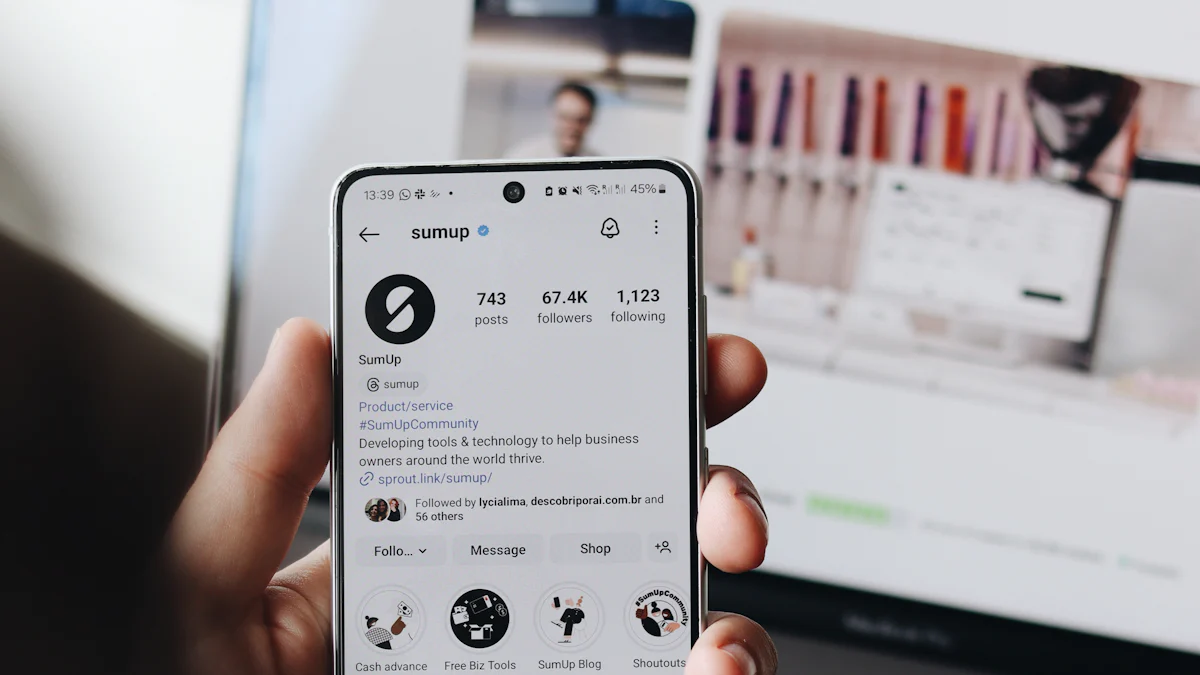Audience Engagement Jobs in 2025: What's Changing?

Audience engagement jobs are changing faster than ever. You’ve probably noticed how virtual events have become the norm. They’ve made it easier to connect with people from anywhere, breaking down barriers like geography and accessibility. Tools for real-time interaction now let you have two-way conversations with your audience, making engagement feel more personal. These shifts aren’t just about technology—they’re reshaping careers in ways that demand creativity and adaptability. Whether you’re in media, retail, or education, the way you connect with your audience is evolving, and staying ahead means embracing these changes.
Overview of Audience Engagement in 2025
Defining Audience Engagement
Audience engagement in 2025 is all about creating meaningful connections with your target audience. It’s no longer just about broadcasting messages or sharing content. Instead, it’s about making your audience feel involved and valued. You’ll see interactive workshops and gamification becoming the norm. These methods keep people engaged and excited. Long, one-sided presentations? Those are being replaced by dynamic formats that encourage participation. Personalization is also a big deal. Tailoring experiences to match individual preferences helps you resonate with your audience on a deeper level.
The Importance of Audience Engagement Jobs
Why are audience engagement jobs so critical now? It’s simple. People’s attention spans are shorter, and distractions are everywhere. If you can’t grab and hold their attention, you’ll lose them. Businesses know this, which is why they’re investing heavily in engagement strategies. Personalization and clear communication are key. Did you know that 70% of B2B buyers prefer interacting with brands through digital channels? Most of their buying journey happens online. This makes audience engagement a must-have skill for anyone in marketing, media, or digital careers.
Key Trends in Digital Media Job Titles
The types of digital media jobs are evolving fast. New roles are popping up to meet the demands of a changing landscape. For example, social media intelligence analysts now monitor online conversations to protect brand reputation. Social media engagement managers focus on crafting strategies to improve audience experiences. You’ll also see roles like virtual reality content strategists, who create immersive media experiences, and platform-specific specialists, such as TikTok content leads. Even voice search optimization strategists are in demand, reflecting the rise of voice-activated interactions. These trends show how digital media careers are adapting to new technologies and audience behaviors.
Industry-Specific Comparisons
Media and Entertainment
The Role of Social Media Managers in Streaming Platforms
In 2025, the role of a social media manager in the media industry is more dynamic than ever. Streaming platforms like Netflix and Hulu rely on these professionals to build strong connections with their audiences. You’ll see them crafting campaigns that spark conversations and keep viewers engaged between seasons. They also monitor trends and online chatter to ensure their content stays relevant. Social media managers are the bridge between the platform and its audience, creating a sense of community that keeps subscribers coming back.
Personalization and Immersive Experiences
Personalization is the secret sauce for audience engagement in media. Platforms like Spotify and Netflix use AI to recommend content tailored to your preferences. This makes you feel like the platform “gets” you. Immersive experiences are also taking center stage. Virtual concerts on platforms like Fortnite and Roblox let you interact with performers and other fans in real-time. Gamified content, like Netflix’s interactive movie ‘Bandersnatch,’ puts you in control of the story. These innovations make media consumption more engaging and memorable.
E-commerce and Retail
AI-Driven Customer Insights
AI is revolutionizing how retailers understand their customers. For example, Amazon’s recommendation engine drives a significant portion of its sales by analyzing your browsing and purchase history. Walmart uses AI chatbots to improve customer service and gather feedback. Sephora takes it a step further with virtual try-ons, letting you see how products look before buying. These tools don’t just enhance your shopping experience—they also give retailers valuable insights to refine their strategies.
Omnichannel Engagement Strategies
Retailers are mastering omnichannel engagement to meet you wherever you are. They map out your customer journey to understand how you interact with their brand. Then, they integrate data from multiple channels to create a seamless experience. For instance, you might browse a product online, receive a personalized email, and then pick it up in-store. By prioritizing the right channels and personalizing their approach, retailers ensure you stay engaged at every step.
Technology and SaaS
Community Building and the Director of Digital Media
In the tech world, community building is a top priority. The director of digital media plays a crucial role here, fostering online communities where users can share experiences and feedback. These communities aren’t just about support—they’re spaces where users feel connected to the brand. This connection builds loyalty and turns customers into advocates. You’ll often find directors leading initiatives like webinars, forums, and social media groups to keep the conversation going.
Leveraging Data for Customer Retention
Data is a goldmine for SaaS companies. They track how you use their products to identify features you love and areas that need improvement. Predictive models help them spot early signs of churn, so they can act before you leave. Some companies even share analytics with you, showing how their tools can boost your efficiency or profitability. This data-driven approach doesn’t just improve retention—it also strengthens your trust in the brand.
Nonprofits and Education
Storytelling and the Director of Digital Content
Storytelling has become a game-changer for nonprofits. It’s not just about sharing facts or statistics anymore. You need to connect emotionally with your audience, and creative storytelling does exactly that. When you tell a compelling story, you help donors see the real impact of their contributions. For example, nonprofits that use storytelling in their fundraising efforts often see a 20% increase in the average gift size. That’s huge!
The director of digital content plays a key role here. They’re the ones crafting these stories and making sure they resonate across different platforms. A multichannel approach—using social media, email, and even video—can triple the amount of donations compared to sticking with just one platform. Adding visuals like photos or videos makes your story even more powerful. It’s all about making your audience feel like they’re part of the mission.
Digital Platforms for Outreach and Engagement
Digital platforms are essential for nonprofits and educational institutions to reach their audiences. You can’t just rely on one channel anymore. A solid digital strategy helps you meet people where they are. For example, Instagram is incredibly popular among younger audiences, with 71% of 18-year-olds in the U.S. using it. If you’re trying to engage youth, that’s where you need to be.
Nonprofits are also leveraging digital tools to expand their reach. Social media platforms let you connect with a broader audience and share emotional stories. Online fundraising platforms make it easy for new donors to contribute. Email marketing is another great tool for keeping donors updated and engaged. Digital tools don’t just help with outreach—they also streamline operations and improve efficiency. Whether you’re running a campaign or delivering programs, these tools make everything smoother.
| Evidence Type | Description |
|---|---|
| Digital Advertising Spending | Increased by 28% as nonprofits recognize technology's power in meeting their goals. |
| Operational Efficiency | Digital tools streamline operations and enhance outreach initiatives. |
| Donor Engagement | Digital fundraising campaigns allow for compelling storytelling and easier donation processes. |
By combining storytelling with the right platforms, you can create meaningful connections and drive real impact. Whether you’re a nonprofit or an educational institution, the right strategy can make all the difference.
Key Skills and Tools for 2025

Emerging Skills for Audience Engagement Jobs
Data Analytics and Personalization
Data analytics is transforming how you connect with your audience. By analyzing user behavior, you can create personalized experiences that resonate deeply. For example, streaming platforms use data insights to recommend shows based on viewing habits. This approach doesn’t just improve engagement—it builds loyalty. To thrive in 2025, you’ll need a mix of technical and analytical skills. These skills help you make decisions that enhance audience experiences.
Personalization is another game-changer. Imagine tailoring your marketing campaigns to match individual preferences. It’s not just about selling a product—it’s about creating a connection. Whether you’re a digital media specialist or a director of digital marketing, understanding data is essential for crafting strategies that work.
Content Creation and Social Media Strategy
Content creation is at the heart of audience engagement. You’ll need to master storytelling, video production, and graphic design to stand out. Social media strategy is equally important. Platforms like Instagram and TikTok demand creative approaches to keep your audience hooked. Social media specialists often use contests, gamification, and interactive posts to boost engagement.
Digital media job titles like director of social media or digital marketing manager require you to think beyond just posting. You’ll need to analyze trends and adapt your content strategy to stay relevant. Community building through social media is also key. It’s not just about followers—it’s about fostering genuine connections that inspire loyalty.
Essential Tools for Digital Media Job Titles
AI-Powered Engagement Platforms
AI-powered tools are revolutionizing how you interact with your audience. These platforms analyze user behavior to recommend personalized content. For instance, chatbots provide instant support, making your audience feel valued. Augmented and virtual reality tools are also gaining traction. They create immersive experiences like virtual concerts, which captivate audiences in new ways.
As a digital media specialist, you’ll rely on these tools to streamline your workflow. Automated content creation platforms help you produce tailored content quickly. Whether you’re a social media manager or a director of digital marketing, AI tools are indispensable for staying ahead.
Social Listening and CRM Tools
Social listening tools are your secret weapon for understanding your audience. Platforms like Sprout Social and BuzzSumo help you monitor trends and track brand mentions. These tools give you real-time insights into what your audience cares about. For example, you can identify high-engagement content and adjust your strategy accordingly.
CRM tools like Agorapulse and Brand24 centralize your interactions, making it easier to manage campaigns. They also help you measure brand awareness and sentiment. Whether you’re a director of social media or a digital marketing manager, these tools are essential for building strong relationships with your audience.
Career Opportunities and Challenges

Job Market Trends in Audience Engagement
Growth in Remote and Hybrid Roles
Remote and hybrid work setups are reshaping audience engagement jobs. You’ll find that 62% of executives now see these flexible arrangements as essential for recruitment. Why? They help attract top talent by offering autonomy and reducing workplace stress. Remote roles also allow you to focus better, with fewer interruptions compared to traditional office settings. This shift is especially important for digital media job titles, where creativity and focus are key. Whether you’re a social media manager or a director of digital marketing, working remotely can boost your productivity and job satisfaction.
Demand for Specialized Skill Sets
The demand for specialized skills in audience engagement is skyrocketing. Traditional methods like static ads or one-way communication just don’t cut it anymore. Companies now look for professionals who can create interactive workshops, gamified experiences, and personalized content. Roles like social media engagement manager are becoming more complex, blending marketing with customer service. These positions require you to craft strategies that enhance audience experiences while managing real-time interactions. If you’re aiming to grow your career in this field, staying updated on recruitment marketing trends and honing niche skills is a must.
Challenges for Professionals
Adapting to Rapid Technological Changes
Keeping up with technology can feel overwhelming. You’re not alone if you’ve struggled with information overload or felt pressure to catch up on delayed tasks. Many professionals face these challenges daily. With so much content competing for attention, it’s tough to figure out what’s valuable. Limited resources and low motivation can make it even harder to innovate. To stay ahead, you’ll need to embrace new tools and strategies that help you deliver relevant content effectively.
Balancing Automation with Human Connection
Automation is a game-changer, but it’s not without its challenges. You need to find the right balance between using tech and maintaining a personal touch. Studies show that companies blending automation with human interaction see a 25% boost in customer retention. Personalized engagement combined with automation can also lead to a 35% higher conversion rate. Tools like chatbots are great for quick responses, but don’t forget the importance of real-time, human interactions. Customers still value that personal connection, and it’s up to you to deliver it.
Audience engagement jobs are evolving rapidly, and you’ll need to keep up to thrive. These roles are becoming more specialized, with a strong focus on technology and personalization. To stay competitive, focus on building skills in AI, data analytics, and creating engaging content. Use interactive formats like quizzes or games to keep your audience hooked. Personalization is key—tailor experiences to make every interaction feel unique.
Staying informed about trends is just as important. Follow industry leaders on LinkedIn or Twitter, and use tools like Google Trends to track what’s new. Join online communities to exchange ideas and learn from peers. By combining these strategies with effective communication, you’ll be ready to tackle the challenges of this dynamic field.
FAQ
What industries offer the most audience engagement jobs in 2025?
You’ll find the most opportunities in media, e-commerce, technology, and nonprofits. These industries rely heavily on digital platforms to connect with their audiences. If you’re skilled in personalization, storytelling, or data analytics, you’ll have plenty of options to explore.
Do I need technical skills for audience engagement roles?
Yes, technical skills are essential. You’ll need to understand tools like AI-powered platforms, CRM software, and social listening tools. Learning basic data analytics can also give you an edge. Don’t worry—many of these tools are user-friendly and easy to pick up.
How can I stay updated on audience engagement trends?
Follow industry leaders on LinkedIn or Twitter. Join online communities and attend webinars. Tools like Google Trends can help you track what’s popular. Staying curious and connected will keep you ahead of the curve.
Are remote audience engagement jobs common?
Absolutely! Remote and hybrid roles are becoming the norm. Many companies value flexibility and hire talent from anywhere. This setup lets you work from home while collaborating with global teams. It’s a win-win for creativity and work-life balance.
What’s the best way to build a career in audience engagement?
Start by mastering key skills like content creation, data analysis, and social media strategy. Gain experience through internships or freelance projects. Networking is crucial—connect with professionals in the field. Keep learning and adapting to new tools and trends to stay competitive.
💡 Pro Tip: Don’t hesitate to experiment with new tools or platforms. The more versatile you are, the more valuable you’ll become in this dynamic field!
See Also
10 Powerful Strategies to Boost Vlog Engagement in 2025
8 Essential Tips for Securing Digital Entrepreneurship Roles in 2025
Exploring Various Forms of Digital Entrepreneurship in 2025
Key Digital Marketing Trends Shaping Entrepreneurship in 2025
